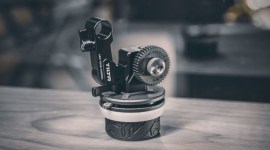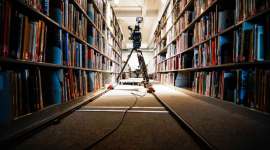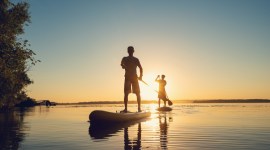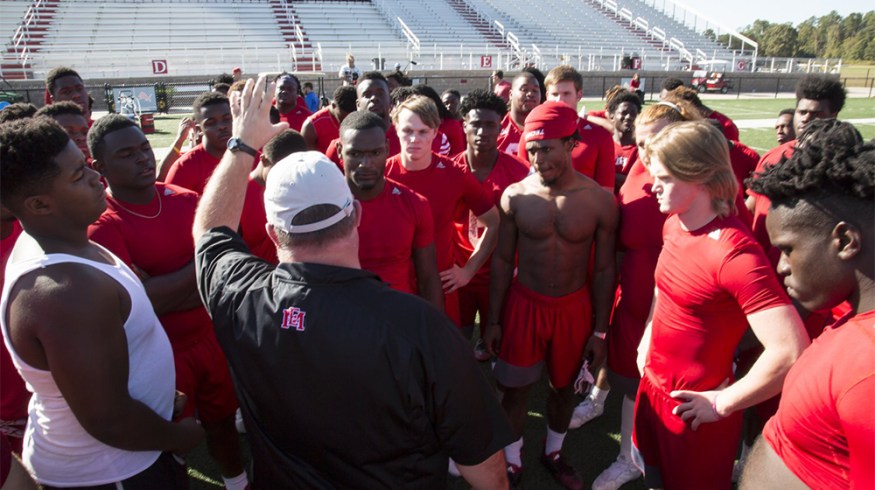
Interview: Last Chance U Director of Photography Gabriel Patay
The director of photography from Last Chance U discusses his unique approach to capturing an episodic documentary.
Cover image via Netflix.
We had the chance to interview Gabriel Patay, the director of photography of the acclaimed Netflix documentary series Last Chance U. Seasons one and two are now streaming on Netflix.
PremiumBeat: First off, I love the series. Will you tell us about the camera package you used?
Gabriel Patay: We ended up going all Sony for Last Chance U. Our main camera was the Sony F55, but we used the Sony FS7 for tight locations and even an A7S for some emergencies. The F55 was a important choice for rural Mississippi, as it handled all the insane temperature extremes and crazy quick weather changes quite well. Also, it’s one of the only current cameras with a true global shutter, so I knew we were going to get incredibly clean and beautiful football action shots.
The F55 RAW recorder shoots a 4:4:4: 4k RAW that provided us with really great dynamic range and color options, so we shot most of our B-roll in this format. With the amount of footage we were shooting, we couldn’t financially take the burden of shooting RAW for everything, but their compressed 4K XAVC format still looks and matches great with the RAW that we shot.
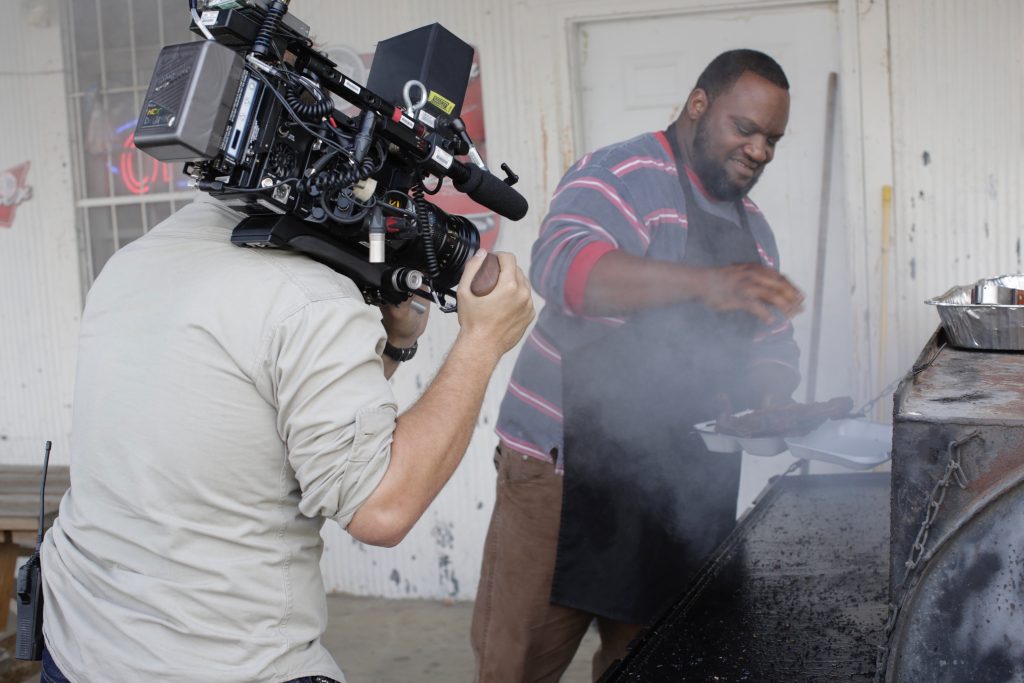
Image via Devin Keebler.
PB: How many terabytes of footage do you typically shoot in a season?
GP: We shot a grand total of about 266TB of footage for both seasons. My hat’s off to the amazing post team that scoured all of it.
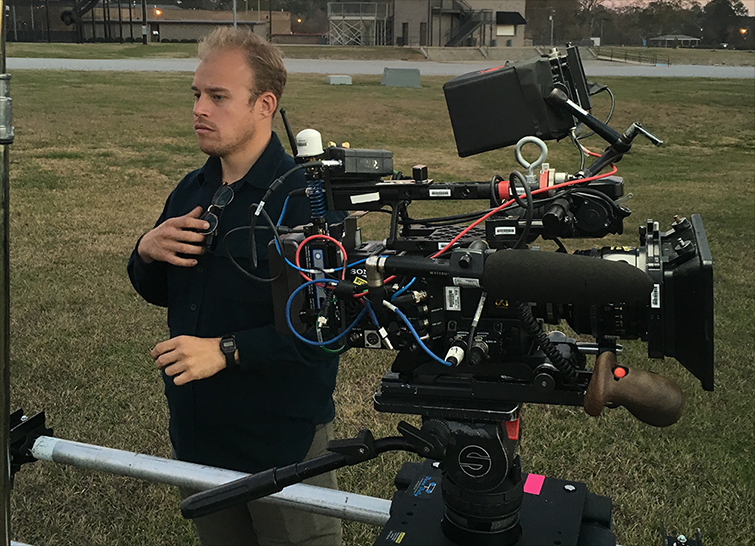
Image via Devin Keebler.
PB: You come from a background of shooting for Tim and Eric and Old Spice ads. How did you transition to documentary work?
GP: Yes, my shooting background is kind of all over the place. I always loved doing nonfiction documentaries, yet I couldn’t find much paid work for it. I helped shoot some small doc short films for my good friend, Adam Ridley, who was also editing the Mitt feature for Greg Whiteley around that time. Greg needed someone in L.A. locally to do a quick shoot for his new feature Most Likely to Succeed. Adam recommended me, and it just worked out. We all just started loving working together. Flash-forward three years, and we have developed an amazing shorthand and working relationship.
PB: Your coverage during practices and games is excellent. How do you have your camera team set up to capture all those moments?
GP: It can be a tough show to produce, and it required a lot of money. Getting a ton of cinema equipment out to the middle of nowhere is not an easy thing. For most of these games, we would inflate up to 8 camera packages with extra crew brought in just for game days. Since we couldn’t feasibly prep and rent the large camera package when needed, we had to simply keep it all sitting idle in the hotel for a majority of our shooting time.
We had three cameras rolling and following players on your average day. Sometimes we’d have to create a rotation schedule because during the first season we were rolling seven days a week. It was a really difficult schedule because we had to be available for anything that was happening in their lives, and these players and coaches never take a break — ever. We would cover the football practices with three cameras. Yet, we rarely ever wanted all three cameras in one space. Greg is often okay allowing a single operator to cover a scene to keep things intimate and raw. What we gain in authenticity, we’re not concerned about losing in coverage.
It was important that our production felt like guests at EMCC and in their lives vs. the show taking over the school. We needed to allow these guys to just do what they normally would, to feel comfortable with us, and to trust that we would be respectful of their stories and footage. Honestly, in the first season, it took a good three weeks of shooting before the kids were at least comfortable with us shooting them privately and to open up about their backgrounds.
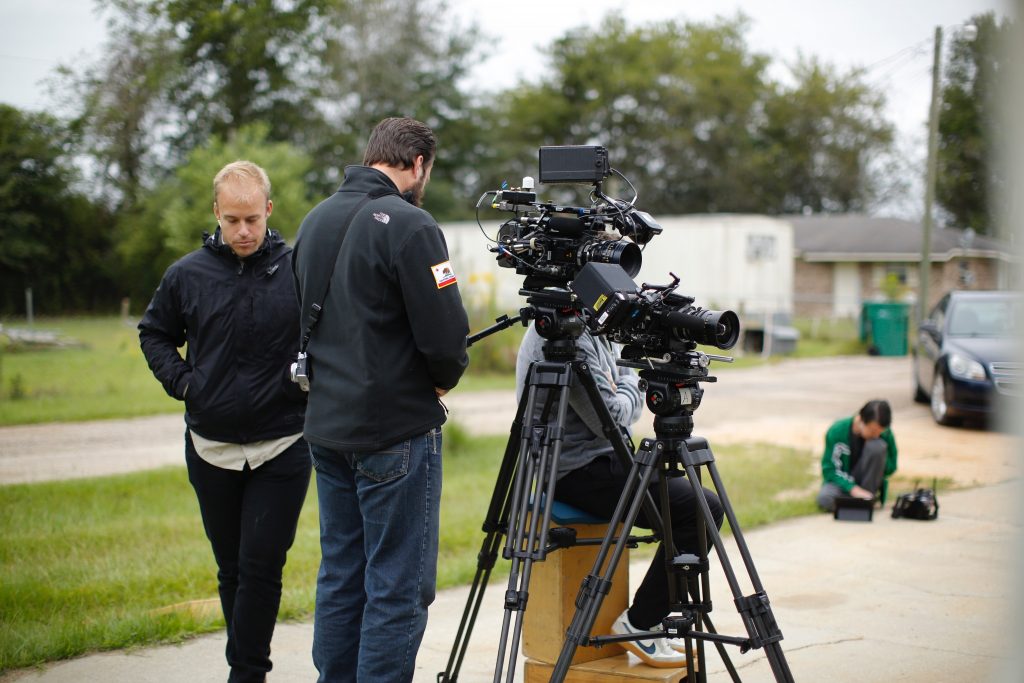
Image via Devin Keebler.
My operators, Terry Zumalt and Luke Lorentzen, are basically my left and right arms for the show. We ask so much of them in the interest of keeping things small and intimate. We need them to be aware of the story, the relationships, and what’s happening in front of their lens and outside of it.
There are so many characters and events in a project like this, and the directors and producers can’t pick up on every nuance. We all needed to be consistently aware while also trying to shoot things in an exciting and cinematic way. Compare this approach to an average reality show that might have a ton of cameras and uninvolved operators covering many angles. Those operators are often given a very specific duty from a producer or DP with very little relationship or knowledge developed with the subjects. I find you lose that intimacy between camera and subject in those environments, and often the footage can feel very stale.
We feel it’s much better to have a very talented, small team who can just live and be in this world. This extends beyond just the operators and into my amazing crew of talented ACs and grips — everyone is important.
I believe camera and lighting technology has gotten to a place that there is no reason we can’t have cinematic, beautifully shot documentaries. A focus on interesting framing as well as careful and creative camera placement, can create gripping results in a tense scene.
With the right tools and people, we are able to capture really amazing moments and stories that no one would ever imagine possible. It’s times like that when the job is its most rewarding. Of course, it doesn’t always work out how you wanted it to, and you still have to use it for the story, but that’s part of the process as well.
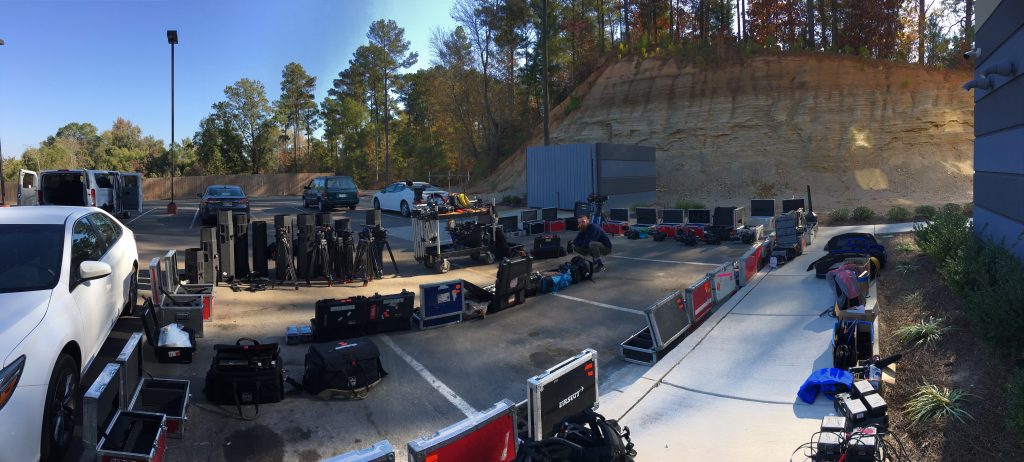
Image via Devin Keebler.
PB: What lenses are you using?
GP: For my camera, we decided to shoot with only a Cooke Panchro 18mm prime for all of the games, sideline coverage, and a lot of the practices. It was a bold choice, in a sense. If you need a close-up of that person, the only way for me to get it is to get right up close to them. To be completely involved. That wide focal length in documentary is rare because it is often much safer for the operator to be farther away on a zoom.
It was very important for us to create some rules and say, “We’re going to stick to our wide lens, and we’re going right in next to them, and we’re going to get the camera involved with these people and this world.” Greg being confident in upholding these kind of bold choices helps to make something unique and beautiful. We used Fuji 19-90 Cabrio lenses for the game cameras, and then for our long shots, we had operators on Fuji Premier 75-400mm with doublers to get as comfortably tight as we legally could in a game without losing too much light.
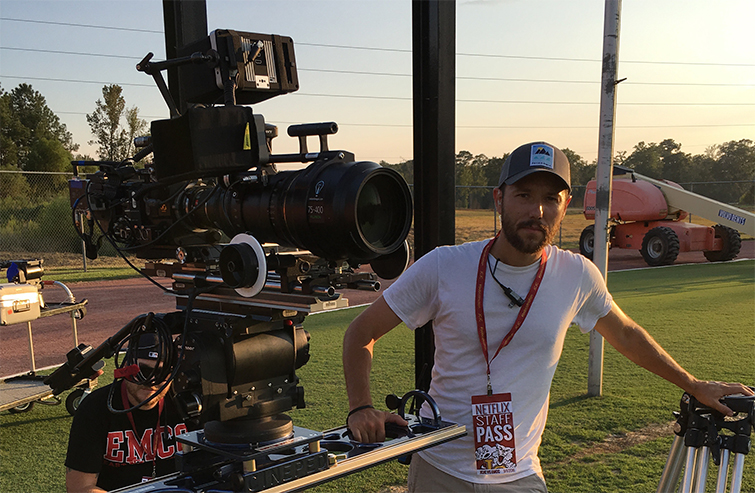
Image via Devin Keebler.
PB: Most of your interviews take place in characters’ cars or their offices. What was your lighting package like?
GP: I try to have a lot of tools with me because we never know what we’re going to need. Like I said, I keep a small crew; I keep our footprint on set very small, but I like to have a number of different options available to us just because we often never know what we’re going into.
I would have a little van full of mostly grip items: Litemat LEDs, small HMIs, and some other lighting tricks. It was definitely very minimal for the day-to-day, but we never wanted anything to feel produced or “lit.” Upholding the raw look was very important. For the interviews, we’d try to set everyone in a natural environment. We had a simple aesthetic idea that every coach would be shot in his office under its fluorescent lighting, and we would, in those cases, to keep the color consistent, just use large bounces to maintain that same color temperature but see their eyes more clearly.
With the athletes, we would be shooting in their bedrooms with a simple daylight look. But we weren’t always shooting those during the day, sometimes we would actually light those interviews as if they were day. We’d put light through the windows, and sometimes it would be a much more involved setup. Yet, for the most part, it would be simply a single Litemat or just some slight gripping of the natural light that already existed.
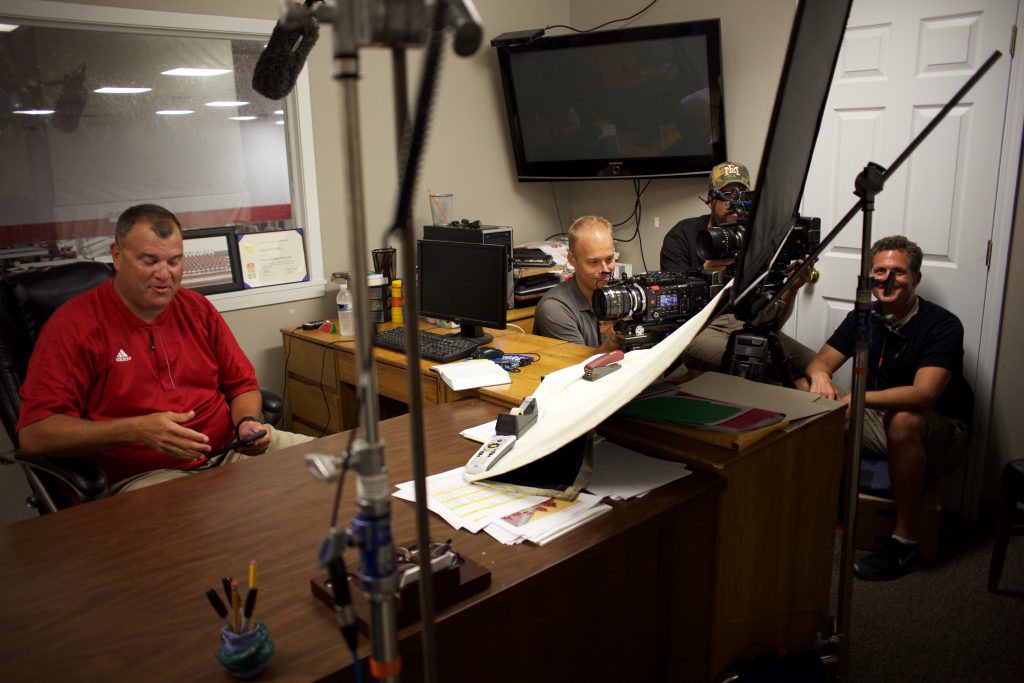
Image via Devin Keebler.
PB: Were all these cameras fed wirelessly back to village during games?
GP: Monitoring wirelessly is always a challenge in these situations. We did not have the ability to cable everything, and for operating on a football field, we needed very powerful systems. So, we had Microlite HD wireless receivers from Nebtek. They have a very small on-camera footprint and are one of the most powerful HD monitoring options out there. Not a cheap system, but monitoring in these remote places reliably was no simple task, where, in any given space, you have army/navy bases and sometimes weird radio frequencies conflicting.
Often, it was just me and a sound guy in a room with the subjects or even just me alone riding in the car with them. Having a powerful wireless system allowed Greg, Adam, and our producers to watch and take notes on what was happening without having to be physically in the same space.
You can stream Last Chance U now on Netflix.




